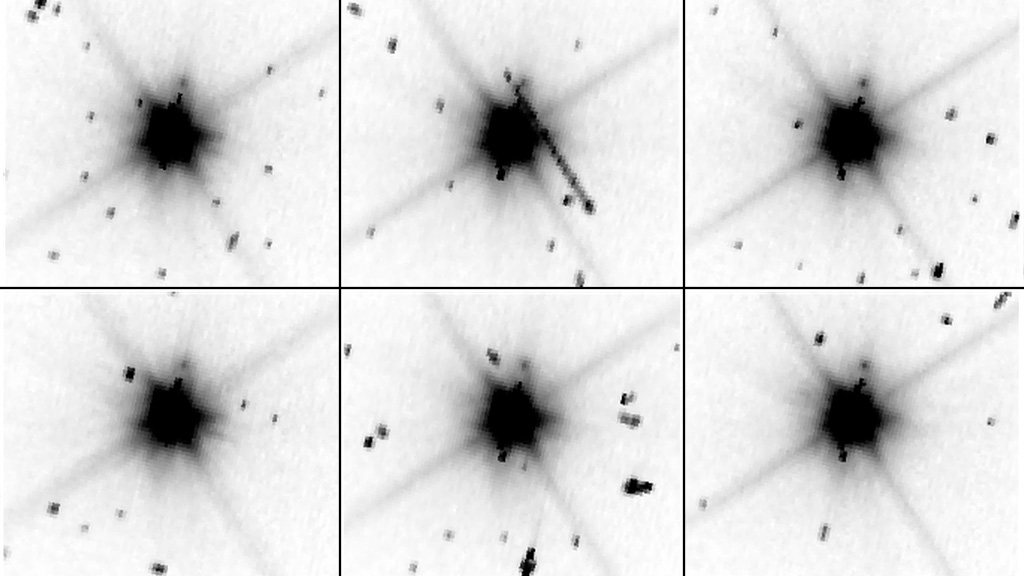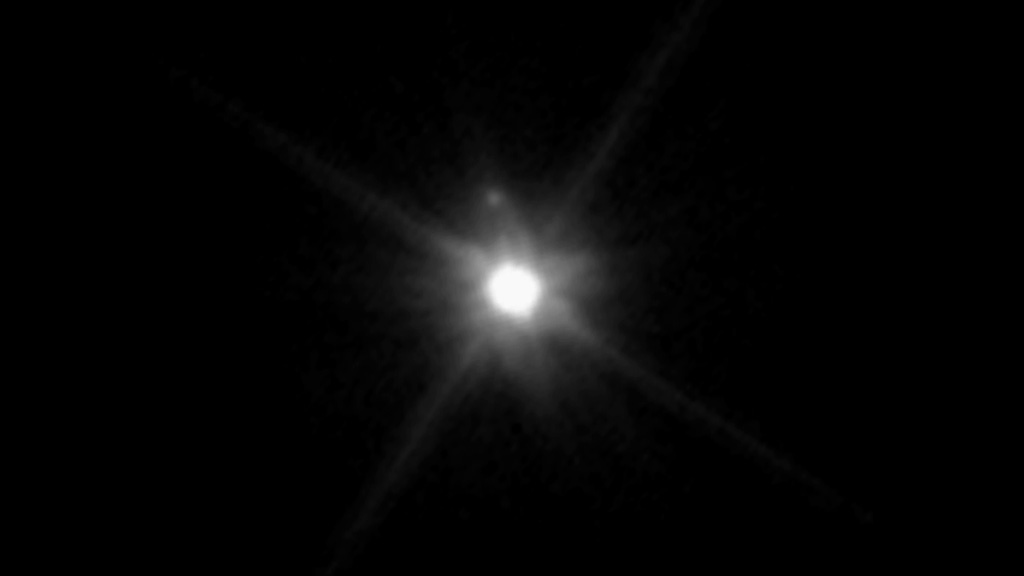Planets and Moons
ID: 12248

On April 27, 2015, astronomers using NASA’s Hubble Space Telescope discovered a tiny moon orbiting Makemake, a dwarf planet located beyond the orbit of Neptune, roughly 4.8 billion miles from Earth. The moon, nicknamed MK 2, is estimated to be just 100 miles in diameter. Earlier attempts made with Hubble to find moons in orbit around Makemake turned up empty. For MK 2, one of the problems was being able to see its faint reflection in the glare of its much larger planetary companion. In order to spot it, astronomers tried taking multiple long-exposure photographs using Hubble’s Wide Field Camera 3. The instrument detects light in a range that’s a little bit wider than what the human eye can see. The trick was to expose the image long enough to bring out any objects around the planet, but not so much as to overexpose the image. By combining the photos, astronomers could easily see the moon. Explore the images to learn more.




Hubble Discovers A New Moon





For More Information
Story Credits
Please give credit for this item to:
NASA's Goddard Space Flight Center
Cover image courtesy of NASA/ESA/SwRI/A. Parker
Makemake artist concept courtesy of NASA
Hubble images courtesy of NASA/ESA/SwRI/A. Parker and M. Buie
Hubble Space Telescope image courtesy of NASA/ESA
NASA's Goddard Space Flight Center
Cover image courtesy of NASA/ESA/SwRI/A. Parker
Makemake artist concept courtesy of NASA
Hubble images courtesy of NASA/ESA/SwRI/A. Parker and M. Buie
Hubble Space Telescope image courtesy of NASA/ESA
Short URL to share this page:
https://svs.gsfc.nasa.gov/12248
Keywords:
SVS >> App
NASA Science >> Planets and Moons
https://svs.gsfc.nasa.gov/12248
Keywords:
SVS >> App
NASA Science >> Planets and Moons







